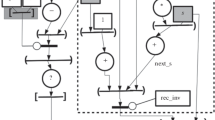Abstract
For a given reference-structure the following problem is posed: Find a partition of a program's (resp. ist data) addresses in pages of limited size and a paging-algorithm such that the “page-fault-rate” is minimized. A “paging-complexity” (of reference-structures) is introduced in order to measure optimal performance. It is shown that the paging-complexity of a concatenation of simple loops is the arithmetic mean of the paging-complexities of the loops involved. The proof rests on a theorem on linear diophantine equations which may deserve attention for its own sake.
Zusammenfassung
Für eine gegebene Referenzenstruktur stellt sich folgendes Problem: Finde eine Partition der Programm- (bzw. Daten-) Adressen in Seiten beschränkter Größe und einen Seitenwechselalgorithmus derart, daß die „Fehlseitenrate” minimiert wird. Das Besterreichbare wird durch die „Seitenwechselkomplexität” gemessen. Es wird gezeigt, daß die Seitenwechselkomplexität einer Konkatenation einfacher Schleifen das arithmetische Mittel der Seitenwechselkomplexitäten der beteiligten Schleifen ist. Der Beweis stützt sich auf einen Satz über lineare diophantische Gleichungen, der für sich Beachtung verdienen mag.
Similar content being viewed by others
Explore related subjects
Discover the latest articles, news and stories from top researchers in related subjects.References
Coffman, E. G., Denning, P. J.: Operating Systems Theory. Englewood Cliffs: 1973.
Hall, M.: Combinatorial Theory. Waltham: 1967.
Lew, A.: On optimal paginations of programs. Proc. 5th Austral. Comp. Conf. 1972.
Polya, G., Szegö, G.: Aufgaben und Lehrsätze aus der Analysis I, 2. Aufl. Berlin: 1954.
Stork, H.-G.: Zur Seitenwechselkomplexität einfacher Referenzenstrukturen. Dissertation, Darmstadt 1975.
Stork, H.-G.: On the paging-complexity of periodic arrangements. (To appear in Acta Informatica.)
Author information
Authors and Affiliations
Rights and permissions
About this article
Cite this article
Stork, H.G. A theorem on linear diophantine equations and the paging-complexity of loop-chains. Computing 17, 105–113 (1976). https://doi.org/10.1007/BF02276755
Received:
Issue Date:
DOI: https://doi.org/10.1007/BF02276755




